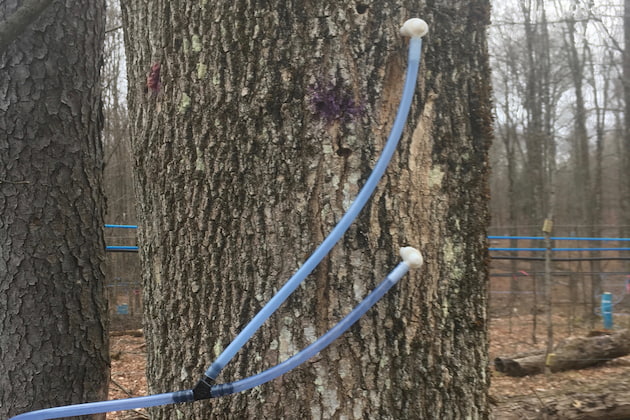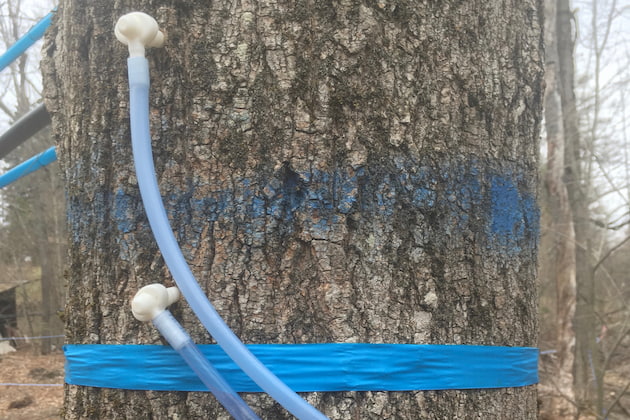Cornell Corner
Does taphole sanitation pay off?
Cornell studies 5/16 set-ups
By STEPHEN CHILDS AND AARON WIGHTMAN, CORNELL MAPLE PROGRAM | JULY 8, 2019
ITHACA, N.Y.—Does extra attention to your tubing and taphole sanitation pay off?
During the 2019 maple season the Cornell Maple Program conducted a number of trials on 5/16 tubing looking at a variety of tubing options for taphole sanitation and tapping.
This year the first sap yield measurements were taken on February 8 and the last measurements on April 10.
We compared several new variations to our set-up of old spouts and drops where the dropline has been used for 7 years and the spout has been in use for 4 years. They have been vacuumed dry at the end of each season when the taps are pulled but receive no other cleaning.
The second check for standard comparison is completely new laterals, drops and spouts for a completely new system.
As a baseline, the old system yielded 26.9 gallons of sap per tap while the all-new system yielded 43.9 gallons of sap per tap, representing an increase of 63.1 percent or 17 more gallons of sap per tap.
We found this to be the biggest variation overall. But we wanted to see if there are there other productive options to installing a completely new tubing system over an old one.
We ran a test where the spout and drop from last year were submersed in a bleach solution of one tablespoon of 5.25 percentsodium hypochlorite in chlorine bleach in per gallon of water for 30 minutes, followed by thorough rinse with potable water. These sanitized drops were then reconnected to a lateral line.
The bleach-sanitized spouts and drops yielded 41.9 gallons of sap per tap. That is a 55.7 percent increase or 15 gallons more sap per tap over the old spout and drop but still two gallons of sap less than the all-new system.
A fourth system was tested where a new spout and drop were placed on old lateral lines.
In this test we found that sap yield for the season was 42.4 gallons of sap per tap. That is a 57.6 percent increase or 15.5 more gallons of sap over the old spouts and drops, and only 1.5 gallons of sap per tap less than the all-new system.
The last treatment on 5/16 tubing was a re-tap treatment with all new tubing laterals, drops and spouts.
A second new spout and short drop and tee was added into the first drop. It was added in line of the same expected partition zone on the tree of the first tap, meaning it's directly above or below the original tap.
In this treatment rather than waiting until the first tap stopped running to conduct the re-tap, it was added after the temperature has gone above 50 degrees F 4 or 5 times. In this case the second tap was added on March 27.
The reasoning is that by going directly above or below the first tap it would not be adding significantly to the partitioning in the tree so it would not be reducing the future opportunity for tapping into clean white wood.
The re-tap treatment yielded 52.2 gallons of sap per tap, 94.5 percent or 25.4 more gallons of sap per tap than old spouts and drops and 8.5 more gallons than the all new system treatment.
This was an improvement over the 2018 tests where re-tapping was installed after the first taphole had dried up.
That test gave a total sap yield of 49.7 gallons of sap per tap 22.2 before the re-tap and 27.5 after the re-tap.
Again the taps were designed to fall in the same column but the late season weather was much more friendly to re-tapping than in 2019.
More variations on this re-tapping idea will be looked at in future years.
































